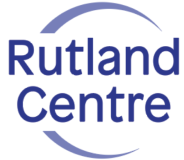)
Eating Disorders
The term ‘Eating Disorder’ refers to a range of complex conditions ‘related to persistent eating behaviors that negatively impact one’s health, emotions and their ability to function in important areas of life.’ The three most common of these are anorexia, bulimia, and binge eating. (Mayo Clinic, 2016).
Eating Disorders Overview
At the Rutland we have years of experience in helping our clients understand their addictions and overcome their eating disorders. We predominately treat Binge Eating disorders and Bulimia presentations, as we find these sit best within out treatment model.
Eating Disorders (EDs) are more prevalent in Ireland than some may believe, and although Ireland-specific reports and statistics are not as readily available compared to other conditions, the HSE reports that approximately 1 in 250 women and 1 in 2,000 men will experience anorexia nervosa at some point in their lives. Bulimia is around five times more common than anorexia with females making up 90% of those with the condition. Binge eating usually affects males and females equally and usually appears later in life, but due to the difficulty of precisely defining binge eating, it is not clear how widespread the condition is (HSE, 2015).
While these eating disorders can and do affect anyone, young people, and particularly young girls, are disproportionately affected; 12% of those admitted under the age of 18 into psychiatric units in hospitals suffer from eating disorders, 87% of whom are female (HRB, 2015). Many suffering from EDs may not be admitted into hospital, however, as it is often wrongly perceived as a non-emergency condition. This is a dangerous and incorrect assumption as illnesses such as these can indeed be life-threatening or carry long-term health risks.
Eating Disorder Symptoms
It can be difficult to spot an eating disorder in a loved one or colleague, but there are a number of warning signs to look out for.
Behavioural
Constant or repetitive dieting
Often complaining about or showing concern over their weight
Refusing or feeling uncomfortable eating in public or with others - often eating alone or secretly
Making excuses or claiming they have already eaten or are eating elsewhere to avoid meals
Changes in food preference - claiming not to eat or to dislike foods that they previously enjoyed
Frequent trips to the bathroom during or after eating
Unnecessary use of diuretics or laxatives
Physical
Sudden weight gain or loss
Large fluctuations in weight
Fatigue, fainting, dizziness or general weakness
Loss or disturbance of menstrual periods in females
Signs of frequent vomiting - swollen throat or jaw, calluses on the back of the hands and knuckles.
Evidence of binge eating - food disappearing from cupboards, hiding food, etc.
(NHS, 2015) (Eating Disorders Victoria, 2015)
We are here for you
Call us any time for advice and support or to make an appointment. We’re ready when you are!
Treatment for Eating Disorders
At the Rutland Centre, we have years of experience in treating eating disorders. 20 to 30% of our female patients and 8.2% of our male patients require help with a food related addiction, with the number of males having nearly doubled since 2006. If you have any concerns about your own eating habits or those of a loved one, please pick up the phone to contact us and find out more about our approach to treating these disorders.
Allow us to help you today - call (01) 494 6358. You may also want to visit our treatment services page for a list of the various treatments we have available.
References
Mayoclinic.org. (2016). Eating disorders. [online] Available at: http://www.mayoclinic.org/diseases-conditions/eating-disorders/symptoms-causes/dxc-20182875
HRB, (2017). Activities of Irish Psychiatric Units and Hospitals 2015 Main Findings. HRB Statistics Series 29. Dublin: Health Research Board.
EDV (2015). Warning signs & symptoms. [online] Available at: https://www.eatingdisorders.org.au/eating-disorders/what-is-an-eating-disorder/warning-signs-a-symptoms
HSE (2015). Eating Disorders - HSE.ie. [online] Available at: http://www.hse.ie/eng/health/az/E/Eating-disorders/
NHS (2015). Eating disorders - NHS Choices. [online] Available at: http://www.nhs.uk/Conditions/Eating-disorders/Pages/Introduction.aspx
How to help someone with addiction
)
)
)
